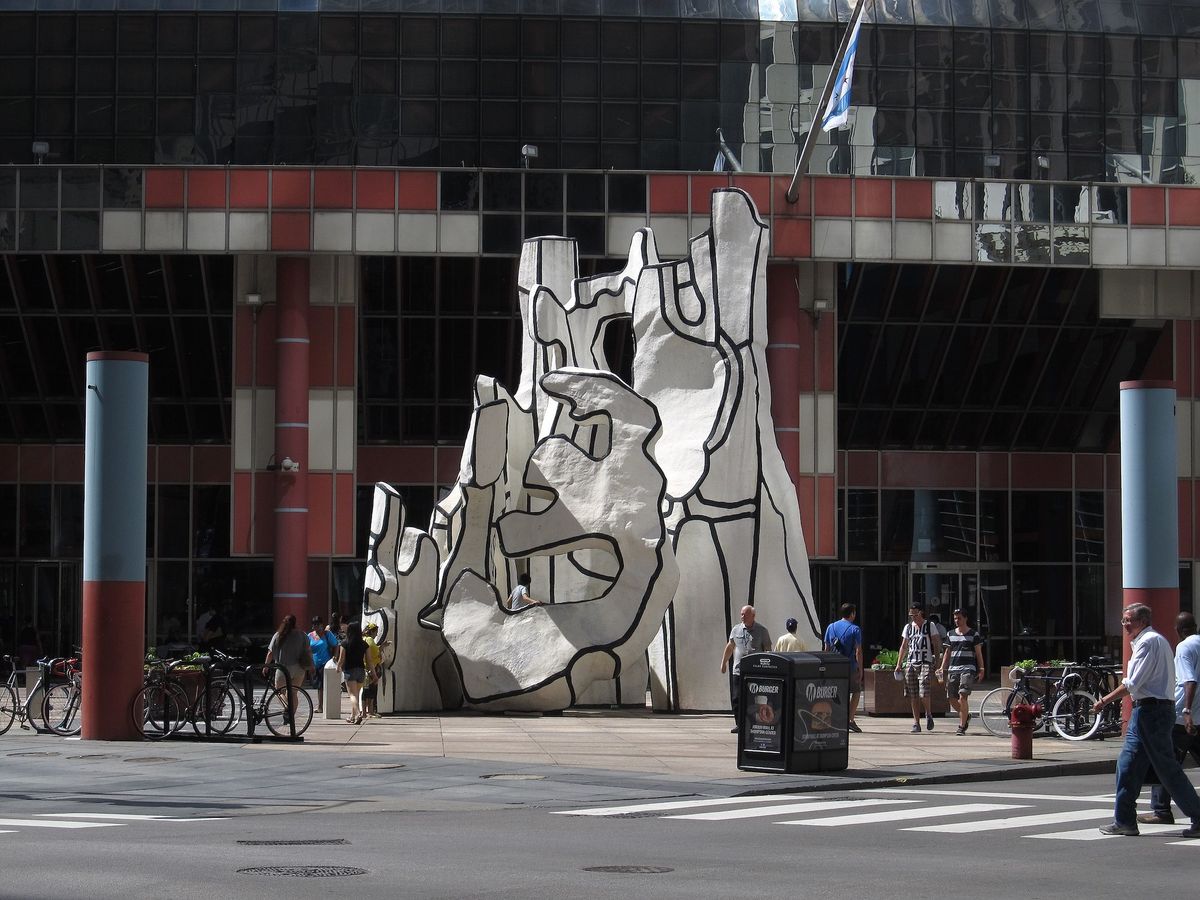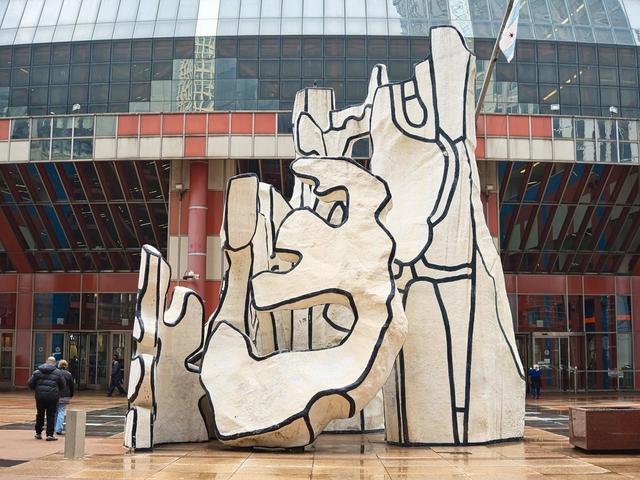A ten-ton Jean Dubuffet outdoor sculpture in Chicago that locals have been known to call “Snoopy in a blender” is moving from the James R. Thompson Center to the Art Institute of Chicago (AIC). After almost 40 years in front of Helmut Jahn’s building, Monument with Standing Beast (1984) will be hauled several blocks southeast as its current home is converted from a government facility into Google offices. The move was confirmed by the AIC this week. (The Thompson Center’s developer had already told CoStar News about the plan earlier this month.)
The Thompson Center was originally built to house offices of the Illinois state government and included artworks commissioned as part of the state’s art-in-architecture initiative—Dubuffet’s sculpture was one of them. When Google agreed to buy the building from Illinois in 2022, a new home needed to be found for these pieces as well as for more than 150 works from the state’s art collection, once proudly displayed in the Postmodern building. According to the Illinois Department of Central Management Services, some pieces have been moved to government buildings several blocks away on Monroe and LaSalle Streets as well as to the Illinois State Museum, but the relocation effort is ongoing.
In July of last year, Monument with Standing Beast was slated to be moved to a former bank building on nearby LaSalle Street, where the state of Illinois would also transfer its office space from the Thompson Center. Instead, the sculpture will now be on long-term loan from the Illinois State Museum to the AIC, where it will be on prominent display outside the museum.
“Our main priority is keeping the sculpture in Downtown Chicago, allowing it to be viewed by as many people as possible, while also being appropriately maintained for years to come,” a spokesperson for the AIC told Block Club Chicago in a statement. The exact timing of the move is still unclear.
Based on Dubuffet’s 1960s drawing series Hourloupe, Monument with Standing Beast is one of three large public sculptures in the US by the artist. Comprising four parts, the abstract work represents an animal, tree, portal and architectural form. Once it settles at the AIC, it will nicely complement Dubuffet’s sculpture The Forest (La forêt) (1969), on view inside the museum on its first level.



